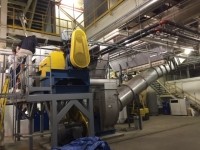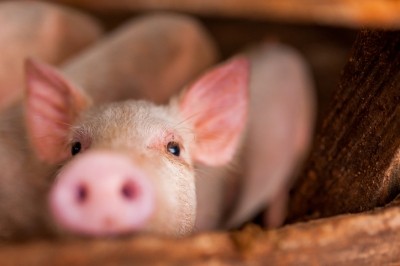US: Fermented feed ingredient producer expands production, facility

The North Dakota-based feed and additive company has been working with its fermented protein and fiber ingredient ProBiotein for several years, said Bob Thornberg, CEO with SweetPro.
“Our whole approach is optimizing the feed value,” he told FeedNavigator. “The whole area of plant-based protein has been climbing and we’re finding ourselves in a nice position.”
The company developed a fermented, plant-based feed ingredient that has concentrated levels of protein and fiber, he said. “We look at it as unlocking the animal’s genetic potential,” he added.
The ingredient was initially developed with support from the US Department of Agriculture’s (USDA) small business initiative, Thornberg said.
“That resulted in a product that we call ProBiotein – where instead of fermenting for ethanol, we ended up flipping that on its head and we fermented for the feed,” he added.
It is fermented from a blend of wheat, oats, barley and flax, he said. The mixture was developed based in part on the grains grown in the region.
“We think flax is an amazing product – it has benefits for us in the fermenting process besides the benefit it has nutritionally for the animals,” he said.
However, the company is now expanding into a new facility and changing how the ingredient is handled to allow for it to access a wider geographic market, said Thornberg.
Company overview and feed development
SweetPro initially grew out of work in the ethanol industry and an interest in improving the use of distillers grains, said Thornberg.
The company manufactures fermented distiller grain products and lick tubs that could be used to feed cattle on pasture along with other production species.
Previously distillers grains as a feed ingredient were primarily used with cattle in feedlots and in dairies, he said.
“This opened the door for cow-calf operations and pasture-based feeding and supplementation,” he added regarding the development work SweetPro did.
The company also added its wet, fermented product ProBiotein to the lick blocks, he said.
“We’ve just included that in the feeds we developed with the distillers' grains, but we never dried it, we just included it,” he said. “Over the year’s we had a lot of inquiries, people were interested in the fermented feeds with the live enzyme activity.”
In addition to altering how the ingredient is handled to expand its use in feed, the company also has designed a line of food products that include it, said Thornberg.
"We ultimately ended up developing a food grade product and built a whole new company from that.”
Plant restoration and market expansion
To develop the new product lines for feed and food use, the company started drying its ProBiotein, said Thornberg.
However, the process calls for the use of a low-temperature drier.
SweetPro purchased a closed gluten processing plant from Archer Daniels Midland (ADM) two years ago to generate its new feed ingredient, he said.
Much of the work to this point was on the drying equipment and to redo the ground floor of the facility.
“It sat idle for a number of years, but it had the nice low temp drying capability,” he said. “We felt it lent itself well to producing ProBiotein where the drying is critical to keep its low temperature and optimize its feed value.”
“As a wet product it’s pretty limited, but once we got access to the big drying system, now it’s opening the door for us to broaden the availability of the product so any number of companies could use it as an ingredient,” he said. “Up until now, it’s only been in our own products.”
Work on the repurposed facility is ongoing, said Thornberg.
“We got the dryer program reoriented so we can dry the product and fermenters in place, but we’re still fermenting in place at the current location and trucking it out,” he added.
The goal is to have everything in place by next summer, he said.
When completed, the drying facility is anticipated to generate about 2,500lb an hour, he said.
However, more work is needed to establish how long it will take to reach that production level and how long the facility can maintain that rate.
When it is completed, there is interest in researching what use of the dry form of the high protein and fiber ingredient could mean in pig and poultry diets, he said.
Additionally, SweetPro has been working with a French company to test small batches of the dried product, he said.
Initial sales of the dried product are expected to be exported based on the work with the company in France.
When the production amounts increase, the anticipated market is expected both domestic and international, Thornberg said.
Production also will continue at the company’s current fermentation facility when the new site is in operation, he added.
















